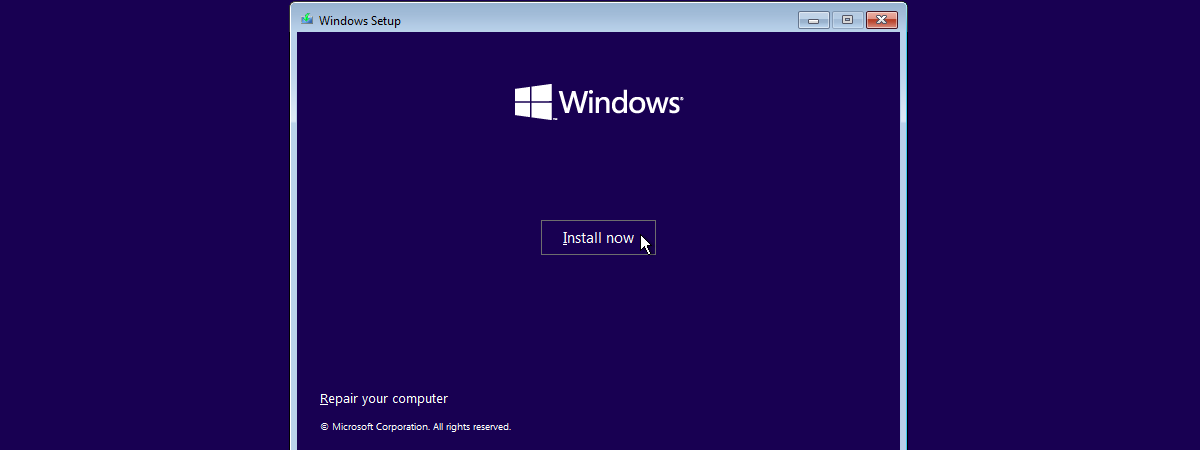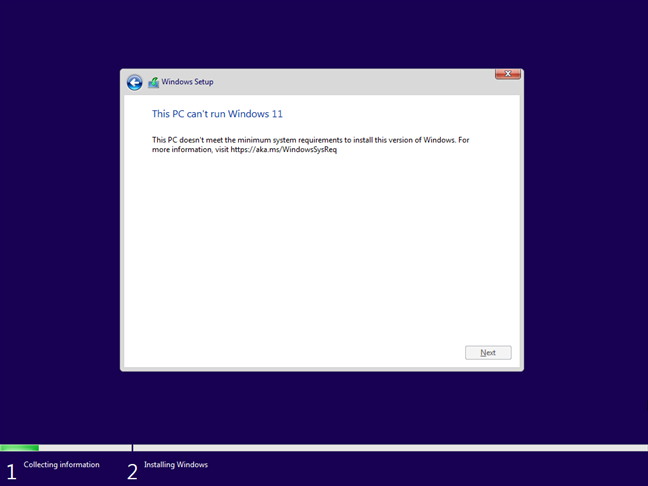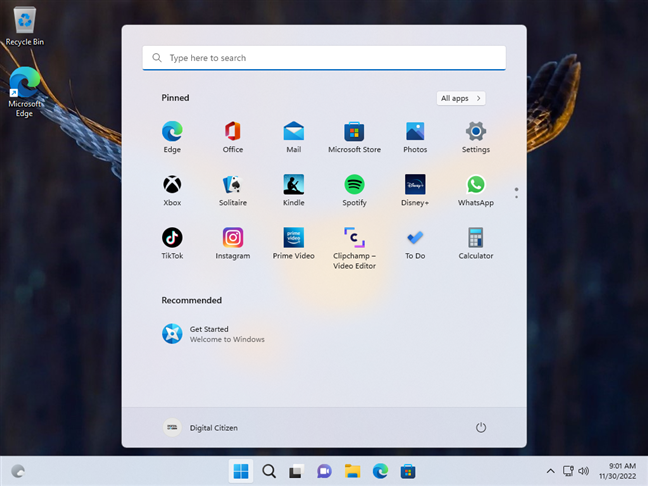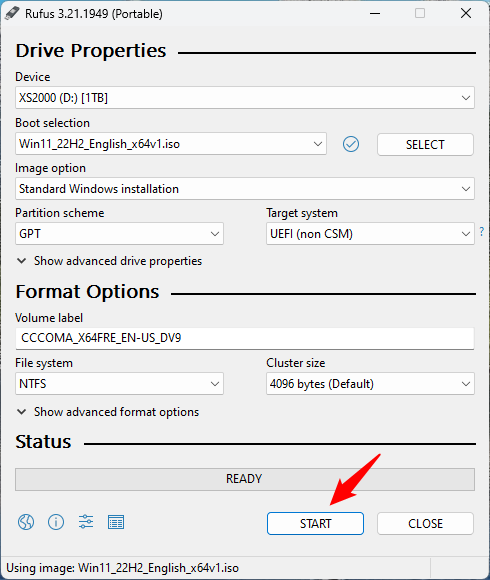
You’ve probably heard of the steep system requirements of Windows 11. You can’t install it on an unsupported computer - one that doesn’t have TPM 2.0, Secure Boot, enough RAM, or a compatible processor. This checklist leaves many on the outside, theoretically unable to install Windows 11. However, the good news is that there are ways to overcome this issue and install Windows 11 on unsupported hardware. Without further ado, here’s how to bypass the Windows 11 restrictions and install it on any computer, even without TPM, Secure Boot, enough RAM, or a supported processor:
IMPORTANT: Before installing Windows 11, check whether your PC is compatible with this operating system. To see if it checks all the boxes, read all the minimum Windows 11 system requirements. If it does, there’s no need for you to bypass the TPM, Secure Boot, RAM, or CPU checks.
Method 1. How to install Windows 11 on any PC using commands to bypass the TPM, Secure Boot, RAM, and CPU checks
First, prepare a Windows 11 bootable USB memory stick using Microsoft’s Media Creation Tool, or burn a Windows 11 ISO file onto a DVD. Then, boot your PC using the Windows 11 installation disc or USB stick. Wait for a second, and your computer or device should briefly display a message asking you to “Press any key to boot from CD or DVD.” Do so and wait for the Windows 11 installation wizard to load.

Press any key to boot from CD or DVD
The Windows 11 install wizard asks you to choose the language, time and currency format, and then the keyboard or input method you’d like to use. Ignore this for the moment. Instead, simultaneously press the Shift + F10 keys on your keyboard to open Command Prompt.

Press Shift + F10 to open Command Prompt
This step is important because if you would’ve continued the setup process normally, it would have eventually told you that “This PC can’t run Windows 11” because “This PC doesn’t meet the minimum requirements to install this version of Windows.”

This PC can't run Windows 11
If your PC had met all the Windows 11 system requirements, like TPM and Secure Boot, there wouldn’t have been any problem. However, because yours doesn’t, to be able to install Windows 11, you need to bypass the operating system’s checks. That includes TPM, Secure Boot, RAM, and CPU if needed. Here’s how to do that:
After pressing Shift + F10, the Windows 11 setup process launches Command Prompt. In its window, type and execute the following commands one after the other, according to your needs:
The first one disables the TPM check, the second one the Secure Boot check, the third one disables the RAM verification, and the fourth disables the CPU requirements. All the commands should end with messages telling you: “The operation completed successfully.” After you run all four of them, close the Command Prompt.

The commands that bypass Windows 11's TPM, SecureBoot, RAM, and CPU checks
Now you’ve configured the Windows 11 setup to bypass the dreaded TPM, Secure Boot, RAM, and processor checks, you should be able to install it on any computer. From here on, you can continue the installation as you normally would. If you need help, we’ve detailed all the next steps in this dedicated guide: How to install Windows 11 from USB, DVD, or ISO. After installing it, you can start testing Windows 11 and see how you like it. 🙂

Windows 11 running on unsupported hardware
Next, let’s see a more graphical method to install Windows 11 without TPM, Secure Boot, or enough RAM.
Method 2. How to install Windows 11 on any PC using Rufus to bypass the TPM, Secure Boot, and RAM limitations
Rufus is a tool that offers yet another method to install Windows 11 on any computer, regardless of whether it meets the system requirements. First, you’ll need to download a Windows 11 ISO file and Rufus. Ensure that you get the latest edition of this app, and keep in mind that you can also get Rufus as a portable app. If you do that, you can simply run the executable file after downloading it without installing anything on your computer.

Download and run Rufus
Once you have both Rufus and the Windows 11 ISO file, connect a USB drive, such as a portable SSD or USB memory stick, to your computer. Use a drive large enough to fit the Windows 11 setup files. 8GB or more is what’s recommended. After you plug it into your PC, select it in the Device list from Rufus’ window.

Connect and select the USB drive for Windows 11
Then, click or tap on Boot selection, choose “Disk or ISO image,” and press Select next to it. In the new window that shows up, navigate and select the Windows 11 ISO file you downloaded earlier on your PC.

Select the Windows 11 ISO file
Next, select the Partition scheme and Target system. If you intend to install Windows 11 on a modern computer with UEFI, select the GPT Partition scheme and UEFI (non-CSM) Target system. Otherwise, if you want to install Windows 11 on an older computer that still uses BIOS, choose the MBR Partition scheme and BIOS (or UEFI-CSM) Target system.

Choose between GPT (UEFI, non CSM) and MBR (BIOS, UEFI-CSM)
You can leave the other settings as they are. To start building the Windows 11 USB drive, press the Start button at the bottom.

Start creating the Windows 11 installation drive
Immediately after you press Start, Rufus opens a window called Windows User Experience, allowing you to customize your Windows 11 installation. This is where you’ll configure Rufus to create a bootable drive that doesn’t check for Windows 11’s system requirements. To do that, in Rufus’ Windows User Experience window, check the “Remove requirement for 4GB+ RAM, Secure Boot and TPM 2.0” option.

Remove requirement for 4GB+ RAM, Secure Boot and TPM 2.0
Press OK, and Rufus will warn you that it will erase all the partitions on the USB drive. That means that all the data on it is deleted during the process. Ensure you have nothing on the USB drive you might still need, and press OK to continue.

Rufus warns you that the data on the USB drive will be lost
Wait for Rufus to create the bootable Windows 11 USB drive: if you want, you can check how the process is going by looking at the progress bar.

Rufus creates the Windows 11 USB drive
When done, Close the Rufus application. Then, you can use the USB drive to boot and install Windows 11 on any computer you like, even if it doesn’t meet the system requirements. For guidance on the next steps, read this article: How to install Windows 11 from USB, DVD, or ISO.
Did you install Windows 11 on a PC with unsupported hardware?
Now you know how to install Windows 11 on any computer, even if its hardware doesn’t meet the operating system’s requirements. So all there’s left to do is try Windows 11 and decide whether you want to keep it. 🙂 Let us know how it all worked out for you and whether you encountered any issues installing Windows 11 on an unsupported computer.





